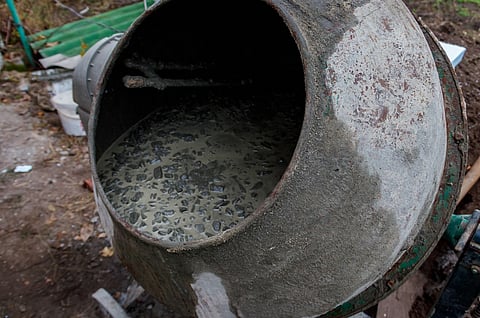

The Central Pollution Control Board (CPCB) has released draft guidelines for the utilization of stone slurry from marble and granite processing, aiming to curb environmental damage from improper disposal.
The guidelines propose using slurry in cement, tiles, and road construction, aligning with the National Green Tribunal's 2022 directive and the Centre for Science and Environment's 2024 report on industrial waste circularity.
In August 2025, the Central Pollution Control Board (CPCB) released a comprehensive Draft Guidelines for Utilization of Slurry Generated from Marble/Granite Processing Units, aimed at curbing the unregulated dumping of stone slurry on land or low-lying areas.
This marks a significant policy step following the National Green Tribunal’s directive in 2022 to address the environmental issues arising from marble slurry disposal. The CPCB, in the draft guidelines, has provided the options for utilisation of stone slurry in cement making, tiles, blocks and building materials, road construction, manufacture of lime and as a filler material.
Notably, this draft comes less than a year after the Centre for Science and Environment (CSE) published its November 2024 report titled Good Practices in Industrial Waste Circularity – A Compendium, which had already emphasised the environmental and economic potential of stone slurry utilisation, particularly in cement and tile manufacturing. CSE’s report highlighted case studies from industries successfully integrating stone slurry into production.
Marble and granite processing units in India—especially in Rajasthan—generate an estimated 5-6 million tonnes of slurry annually. Improper dumping of this slurry leads to air pollution due to dried particulate matter, and contamination of soil and water resources. Recognising this, CPCB’s guidelines propose clear measures for slurry storage, handling, and utilisation, including:
Lined storage areas within unit premises,
GPS-enabled vehicles to prevent illegal dumping,
Mandated MoUs between slurry generators and users, and
Inclusion of utilisation plans in Consent to Operate (CTO) conditions.
In Ordinary Portland Cement (OPC) manufacturing, marble slurry is used in both clinker and gypsum production. A blend of six per cent gypsum and 94 per cent clinker is mixed and ground together. The stone slurry powder is utilised in gypsum-making process by mixing it with phosphogypsum (a byproduct of the fertiliser industry manufacturing phosphoric acid) at a ratio of 1:2 (phosphogypsum to stone slurry).
Additionally, the stone slurry powder finds usage in clinker production, where five per cent stone slurry is mixed with 89 per cent clinker (94 per cent clinker). Stone slurry is used in clinker only in the case of OPC cement—the overall utilisation of stone slurry powder in OPC cement production amounts to approximately nine per cent (five per cent in clinker and four per cent in gypsum making).
In Portland Pozzolana Cement (PPC), which consists of 35 per cent fly ash, six per cent gypsum, and 59 per cent clinker, stone slurry is used only in gypsum, accounting for four per cent of total input.
For example, Mangalam Cement, based in Rajasthan’s Kota district, integrates Kota stone slurry into both OPC and PPC manufacturing. The slurry is sourced from the Ramganj Mandi dumping site. This practice has resulted in considerable cost savings—up to Rs 27 million annually, compared to the use of mineral gypsum sourced from Aligarh or Morak.
In the tile sector, marble slurry—rich in calcium carbonate—is increasingly replacing feldspar, a naturally mined mineral. Morbi in Gujarat, which accounts for nearly 90 per cent of India’s tile production, has emerged as a key hub for this sustainable practice. Of the 750+ tile manufacturing units in Morbi, around 40-50 per cent have adopted marble slurry integration, using it in the production of approximately 50,000 tonnes of tiles daily. With an average slurry content of 10-13 per cent, this equates to 5,000-6,500 tonnes/day or 1.8-2.35 million tonnes annually, effectively conserving 1.65-1.8 million tonnes of feldspar each year.
CSE’s report documents standout examples:
Vitrified tile manufacturing uses seven per cent slurry in vitrified tiles, improving tile strength while reducing reliance on feldspar.
Wall tile manufacturing incorporates 20 per cent slurry in wall tile powder, replacing C-grade feldspar, a natural mineral that contains impurities and requires more energy and time to grind. This substitution improves energy efficiency and reduces production costs.
Porcelain tiles integrate 13 per cent slurry into porcelain tiles, achieving a Modulus of Rupture (MOR) of 280 kg/cm², surpassing the international standard of 250 kg/cm².
Together, these initiatives demonstrate how industrial waste like marble slurry can be transformed into a valuable resource, promoting cost efficiency, product enhancement, and circular economy principles in both cement and tile manufacturing industries.